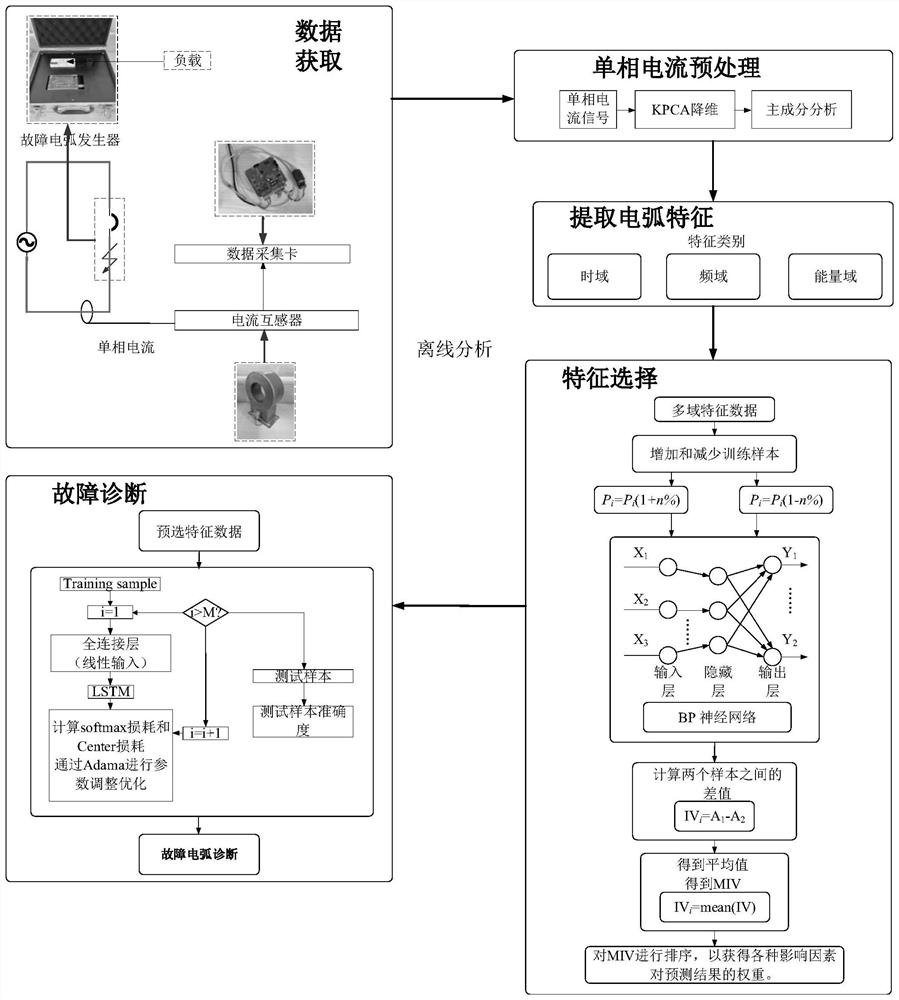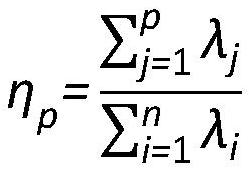Fault arc multi-domain identification method based on KPCA-MIV-LSTM
A recognition method and fault arc technology, applied in neural learning methods, character and pattern recognition, complex mathematical operations, etc., can solve problems such as the difficulty of identifying series arc faults, reduce the amount of calculation, and achieve gradient disappearance and gradient explosion. simple effect
- Summary
- Abstract
- Description
- Claims
- Application Information
AI Technical Summary
Problems solved by technology
Method used
Image
Examples
Embodiment Construction
[0077] Such as figure 1 As shown, a KPCA-MIV-LSTM based fault arc multi-domain identification method, the method includes the following sequential steps:
[0078] (1) Conduct experiments on the series arc fault test platform to obtain single-phase current signals under different load conditions;
[0079] (2) Using the KPCA algorithm to reduce the dimension, by calculating the eigenvector of the kernel matrix, separating the non-correlated components in the measurement signal, and preprocessing the obtained single-phase current;
[0080] (3) Select the first principal component whose contribution rate exceeds 85% in the signal preprocessed by the KPCA algorithm as the subsequent processing target to perform multi-domain feature analysis in the time domain, frequency domain and energy domain;
[0081] (4) By calculating the MIV average influence value of multi-domain features under various load types, evaluate and select high-correlation features under corresponding load condit...
PUM
 Login to View More
Login to View More Abstract
Description
Claims
Application Information
 Login to View More
Login to View More - R&D
- Intellectual Property
- Life Sciences
- Materials
- Tech Scout
- Unparalleled Data Quality
- Higher Quality Content
- 60% Fewer Hallucinations
Browse by: Latest US Patents, China's latest patents, Technical Efficacy Thesaurus, Application Domain, Technology Topic, Popular Technical Reports.
© 2025 PatSnap. All rights reserved.Legal|Privacy policy|Modern Slavery Act Transparency Statement|Sitemap|About US| Contact US: help@patsnap.com



